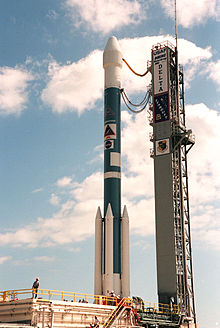
Presolar grains are interstellar solid matter in the form of tiny solid grains that originated at a time before the Sun was formed. Presolar grains formed within outflowing and cooling gases from earlier presolar stars. The study of presolar grains is typically considered part of the field of cosmochemistry and meteoritics.
The stellar nucleosynthesis that took place within each presolar star gives to each granule an isotopic composition unique to that parent star, which differs from the isotopic composition of the Solar System's matter as well as from the galactic average. These isotopic signatures often fingerprint very specific astrophysical nuclear processes[1] that took place within the parent star or formation event and prove their presolar origin.[2][3]
- ^ Zinner, Ernst (1998). "Stellar Nucleosynthesis and the Isotopic Composition of Presolar Grains from Primitive Meteorites". Annual Review of Earth and Planetary Sciences. 26: 147–188. Bibcode:1998AREPS..26..147Z. doi:10.1146/annurev.earth.26.1.147.
- ^ Bernatowicz, Thomas J.; Walker, Robert M. (1997). "Ancient Stardust in the Laboratory". Physics Today. 50 (12): 26–32. Bibcode:1997PhT....50l..26B. doi:10.1063/1.882049.
- ^ Clayton, Donald D.; Nittler, Larry R. (2004). "Astrophysics with Presolar Stardust". Annual Review of Astronomy and Astrophysics. 42 (1): 39–78. Bibcode:2004ARA&A..42...39C. doi:10.1146/annurev.astro.42.053102.134022.